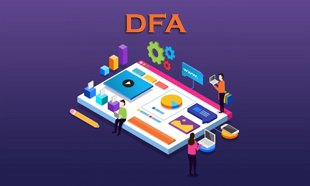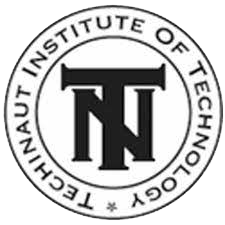0
Diploma in Financial Application" at Verma Computer Institute, Hazratganj, Lucknow, Uttar Pradesh, affiliated with Techinaut Institute of Technology, provides specialized training in financial software, accounting principles, and financial analysis, preparing students for careers in the finance and accounting sectors.
DIPLOMA IN FINANCIAL APPLICATION
Verma Computer Institute, located in Hazratganj, Lucknow, Uttar Pradesh, stands as a pillar of excellence in computer education. This comprehensive review delves into the six-month Diploma in Financial Application (DFA) course offered by Verma Computer Institute, a Techinaut Institute of Technology franchise. The course aims to equip students with practical skills and theoretical knowledge in financial applications, enabling them to excel in various financial roles and functions.
THE OBJECTIVE OF THE COURSE:
The primary objective of the Diploma in Financial Application (DFA) course at Verma Computer Institute is to train students in applying computer technology in financial management and accounting. Throughout the six-month duration, students undergo comprehensive training covering the basics of computers, computer appreciation, word processing, spreadsheet packages, presentation packages, internet usage, email communication, and specialised training in financial software such as Tally. The course is meticulously designed to prepare students for entry-level positions in accounting firms, financial institutions, and corporate finance departments.
Section 1: Basics of Computer
This section provides students with a solid foundation in computer basics, essential for understanding financial applications. Topics covered include:
Introduction to Computers: Students learn about computers' history, components, and functions, as well as their applications in financial management and accounting.
Computer Hardware and Software: Students explore the essential components of a computer system, including hardware such as the CPU, memory, storage devices, and peripherals, as well as different types of software used in financial applications.
Section 2: Computer Appreciation
This section focuses on developing an appreciation for the role of computers in financial management. Topics covered include:
Understanding Financial Applications: Students learn about the various financial applications used in business operations, such as accounting software, financial analysis tools, and budgeting software.
Importance of Data Security: Students understand the importance of data security in financial applications, including measures to protect sensitive financial information from unauthorised access and manipulation.
Section 3: Word Processing
This section introduces students to word processing software and its applications in financial documentation. Topics covered include:
Introduction to Word Processing: Students learn about the benefits of word processing software in creating and formatting financial documents such as reports, memos, and letters.
Using MS Word: Students gain hands-on experience with Microsoft Word, learning how to create, format, and edit financial documents and use templates and styles to maintain consistency.
Section 4: Spreadsheet Package
This section focuses on developing proficiency in spreadsheet software for financial analysis and reporting. Topics covered include:
Introduction to Spreadsheets: Students learn about the benefits of spreadsheet software in financial analysis, budgeting, and forecasting.
Using MS Excel: Students gain practical experience with Microsoft Excel, learning how to create and format financial spreadsheets, perform calculations, and create charts and graphs for data visualisation.
Section 5: Presentation Package
This section introduces students to presentation software and its financial reporting and presentation applications. Topics covered include:
Introduction to Presentations: Students learn about the importance of presentations in financial reporting and communication and the benefits of using presentation software to create visually engaging slideshows.
Using MS PowerPoint: Students gain hands-on experience with Microsoft PowerPoint, learning how to create and format financial presentations, add multimedia elements, and deliver effective presentations to stakeholders.
Section 6: Introduction to the Internet
This section provides students with an overview of the Internet and its applications in financial management. Topics covered include:
Basics of the Internet: Students learn about the history and development of the Internet, as well as its role in accessing financial information, conducting research, and communicating with clients and stakeholders.
Online Financial Resources: Students gain an understanding of the various online resources available for financial research and analysis, including economic news websites, market data platforms, and online databases.
Section 7: Email Communication
This section focuses on developing practical email communication skills for financial professionals. Topics covered include:
Importance of Email Communication: Students learn about the benefits of email communication in financial management, including its role in facilitating correspondence with clients, colleagues, and stakeholders.
Using Email Clients: Students gain practical experience with email clients such as Microsoft Outlook, learning how to compose, send, receive, and manage financial emails, as well as how to use email etiquette and best practices.
Section 8: Introduction to Tally
This section introduces students to Tally, a popular accounting software used in businesses worldwide. Topics covered include:
Overview of Tally: Students learn about the features and functionalities of Tally, including its role in financial accounting, inventory management, and taxation.
Tally Interface and Navigation: Students gain practical experience with the Tally interface, learning how to navigate the software, create and manage financial ledgers, and generate financial reports.
Section 9: Administration in Tally
This section focuses on administrative tasks in Tally, such as user management and data backup. Topics covered include:
User Management: Students learn how to create and manage user accounts in Tally, assign permissions and access levels, and track user activity.
Data Backup and Security: Students understand the importance of data backup and security in Tally. They learn how to perform regular backups, restore data in case of loss or corruption, and implement security measures to protect sensitive financial information.
Section 10: Managing Groups, Ledgers, and Vouchers
This section focuses on managing groups, ledgers, and vouchers in Tally for effective financial management. Topics covered include:
Creating and Managing Groups: Students learn how to create and manage groups in Tally to organise financial transactions and accounts effectively.
Creating and Managing Ledgers: Students gain practical experience developing and managing ledgers in Tally for different financial transactions, including sales, purchases, expenses, and income.
Creating and Managing Vouchers: Students learn how to develop and manage vouchers in Tally to record financial transactions accurately and efficiently, including sales invoices, purchase orders, payment receipts, and journal entries.
Section 11: Cost Centres and Cost Categories
This section introduces students to cost centres and cost categories in Tally for tracking and analysing costs. Topics covered include:
Understanding Cost Centres: Students learn about cost centres and their role in allocating and tracking organisational costs.
Creating and Managing Cost Centres: Students gain practical experience developing and managing cost centres in Tally for different departments, projects, or activities.
Understanding Cost Categories: Students learn about cost categories and their role in categorising and analysing costs based on department, product, or project criteria.
Section 12: Introduction to Budgets
This section focuses on budgeting in Tally for financial planning and control. Topics covered include:
Understanding Budgets: Students learn about the importance of budgets in financial planning and control, as well as the benefits of using budgets to set financial goals and track performance.
Creating and Managing Budgets: Students gain practical experience in creating and managing budgets in Tally for different financial periods, departments, or activities, as well as in monitoring budget performance and variance.
Section 13: Introduction to Voucher
This section introduces students to voucher entries in Tally for recording financial transactions. Topics covered include:
Understanding Voucher Entries: Students learn about voucher entries and their role in recording financial transactions accurately and efficiently.
Creating and Managing Vouchers: Students gain practical experience creating and managing vouchers in Tally for different financial transactions, including sales, purchases, expenses, and income.
Section 14: Currencies (Multiple Currencies and Foreign Exchange)
This section focuses on managing multiple currencies and foreign exchange transactions in Tally. Topics covered include:
Understanding Multiple Currencies: Students learn about multiple currencies, their role in international business transactions, and the benefits and challenges of using multiple currencies in Tally.
Managing Foreign Exchange Transactions: Students gain practical experience managing foreign exchange transactions in Tally, including recording currency conversions, updating exchange rates, and reconciling foreign currency accounts.
Section 15: Inventory Information
This section introduces students to inventory management in Tally for tracking and managing stock levels. Topics covered include:
Understanding Inventory Management: Students learn about the importance of inventory management in controlling costs, optimising resources, and meeting customer demand.
Managing Inventory Information: Students gain practical experience managing inventory information in Tally, including creating and managing stock items, recording stock transactions, and generating inventory reports.
Section 16: Voucher Entry
This section focuses on advanced voucher entries in Tally for recording complex financial transactions. Topics covered include:
Understanding Advanced Voucher Entries: Students learn about advanced voucher entry features in Tally, including multi-currency transactions, cross-company transactions, and stock transfers.
Creating and Managing Advanced Vouchers: Students gain practical experience developing and managing advanced vouchers in Tally for different financial transactions, including intercompany transactions, stock adjustments, and bank reconciliations.
Section 17: Displaying Information from Tally
This section focuses on generating and customising reports in Tally for financial analysis and decision-making. Topics covered include:
Understanding Tally Reports: Students learn about the various reports available in Tally, including balance sheets, profit and loss statements, cash flow statements, and trial balances.
Generating Reports: Students gain practical experience in developing and customising reports in Tally to meet specific financial reporting requirements and in exporting reports to different formats for further analysis and presentation.
Section 18: Introduction to Taxation
This section introduces students to taxation concepts and their implications in financial management. Topics covered include:
Understanding Taxation: Students learn about the different types of taxes levied by governments, including income tax, sales tax, value-added tax (VAT), and goods and services tax (GST).
Taxation in Tally: Students gain practical experience managing taxation in Tally, including configuring tax rates, calculating tax liabilities, and generating tax reports for compliance and reporting purposes.
Section 19: Introduction to Payroll
This section introduces students to payroll management in Tally to process employee salaries and benefits. Topics covered include:
Understanding Payroll Management: Students learn about the components of payroll management, including salary calculation, deduction and allowance management, and statutory compliance.
Payroll Processing in Tally: Students gain practical experience processing payroll in Tally, including configuring payroll settings, creating employee profiles, calculating salaries, and generating payroll reports.
CONCLUSION:
The Diploma in Financial Application (DFA) course offered by Verma Computer Institute equips students with practical skills and theoretical knowledge in financial applications, enabling them to excel in various financial roles and functions. Through a comprehensive curriculum covering computer basics, computer appreciation, word processing, spreadsheet packages, presentation packages, internet usage, email communication, and specialised training in financial software such as Tally, students develop the proficiency and confidence to pursue rewarding careers in accounting, finance, and financial management. Graduates of the course emerge as competent financial professionals, ready to contribute effectively to the success of organisations in the dynamic and competitive business environment.


